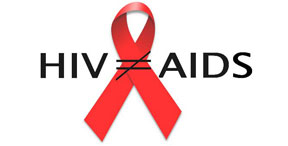 NEW DELHI: The number of HIV patients has registered an increase in states where it was earlier being considered to be non-prevalent with 10 such states together accounting for 57 per cent of new infections in 2012.
NEW DELHI: The number of HIV patients has registered an increase in states where it was earlier being considered to be non-prevalent with 10 such states together accounting for 57 per cent of new infections in 2012.
According to a report compiled by National Aids Control Organization (NACO) and Indian Council of Medical Research (ICMR), although HIV prevalence declined at the national level, a reverse trend was seen in certain states like Odisha, Jharkhand, Punjab, Assam and Uttarakhand where HIV prevalence earlier was considered to be low.
Titled ‘India HIV Estimates-2012’, the report points out that the 10 low-prevalence states of Odisha, Jharkhand, Bihar, Uttar Pradesh, West Bengal, Gujarat, Chhattisgarh, Rajasthan, Punjab and Uttarakhand together account for 57 per cent of new infections.
“On the other hand, the six high prevalence states account for only 31 per cent of the 1.16 lakh estimated new infections in 2011 among adults,” says the report. These states are Andhra Pradesh, Karnataka, Maharashtra, Manipur, Nagaland and Tamil Nadu.
Indicating a positive trend in these states, it mentions that the adult HIV prevalence declined in these states during the period of 2007-2011.
“India has done well overall but if you look state by state, there are varying trends,” said UNAIDS India Country Coordinator Oussama Tawil.
“Previously, HIV prevalence in parts of northern India was thought to be low. One example of this is the state of Punjab, where the problem is particularly related to injecting of drugs,” he added.
Migration from rural areas to high prevalence areas and higher prevalence among pregnant women with migrant spouses have also been identified as possible reasons for such trends.
“Low levels of HIV among high risk groups in these states, large volume of out-migration from rural areas to high prevalence areas, higher prevalence in rural than urban population and among pregnant women with migrant spouses indicate the possible role of migration in fuelling HIV epidemics in these states,” the report says.
India has the third largest HIV population in the world with approximately 2.1 million people suffering from it, but there are only eight lakh people who are undergoing Anti- Retroviral Therapy (ART) treatment, according to official data.
On World AIDS Day, Union Health Minister J P Nadda had sought the people’s involvement to meet the global goals of zero new infection and death from HIV/AIDS. He had also stressed on raising awareness and boosting preventive methods as the key to the success of the mission.
However, the report notes that the program has to customize its strategies to effectively address the emerging vulnerabilities and adapt them to suit the requirements of different geographical regions. -PTI






